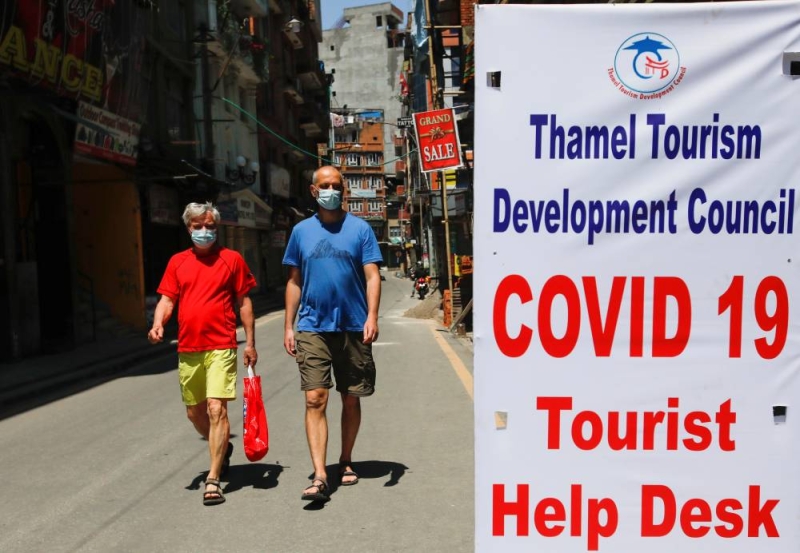
KATHMANDU, September 28: The government is on its track to vaccinate one-third of Nepal’s population against COVID-19 by mid-October. The government has set the target of immunizing one-third of the targeted groups by this October 17.
Accordingly, 30 percent of the target population has been given the first dose jabs while 28 percent has received the full dose.
Sagar Dahal, Chief of the Department of Health Service, Family Welfare Division, Child Health and Immunization Section, said that the target group would be fully immunized by October 17. "We have said we will vaccinate 33 percent of the targeted groups until the end of Ashoj (17 October). We have been conducting the vaccination programme on a daily basis accordingly. We will vaccinate 33 per cent of the targeted groups by October 17," he said.
Prime Minister Sher Bahadur Deuba had declared soon after his appointment as the Prime Minister on June 13 that the COVID vaccination would be the top priority and 33 percent of the targeted groups would be given the shots by October 17.
In line with this declaration, the government has adopted the policy of procuring the vaccines on grant from countries supplying the vaccines on grant and even by purchasing from China and India.
The government has a target to immunize 71.6 per cent or a total of 21 million 756 thousand 763 people above 18 years of age. It has stated that 33 per cent of the targeted population would be immunized by October 17, two-thirds of the targeted population by January 14, 2022 and all the targeted population by April 13, 2022.
The Ministry of Health and Population has stated that the pandemic can be contained if at least 60 per cent of the country's population is vaccinated.
The Kathmandu Valley has the highest number of people vaccinated against COVID-19 virus.
Ten districts with highest COVID-19 vaccination coverage:
Province-wise data of vaccinated population:
According to Ministry Joint Spokesperson Dr Samir Kumar Adhikari, almost all target groups ( health professionals and cleaning workers, those working at the frontline, citizens above 65 and so on) across the country have been vaccinated. Now, the vaccination campaign aims to inoculate all eligible citizens. Currently, almost all people above 50 years of age have received the vaccines.
The Ministry has launched a drive to provide first dose of COVID-19 vaccines (Vero Cell) to all people above 18 years of age from Taplejung, Sankhuwasabha, Solukhumbu, Rasuwa, Jumla, Mugu, Humla, Dolpa, Bajura and Darchula districts from September 20-30.
Vaccines would be made available to students above 18 years of age from Kavrepalanchok and Chitwan districts, all people above 35 from Kathmandu, Lalitpur, Bhaktapur, Makawanpur, Ramechhap, Sarlahi and Achham districts and students above 18, those who are yet to be vaccinated against the virus and missed the vaccination drive.
It has been learnt that the government is at work to import 100,000 doses of COVID-19 vaccines (40,000 doses Moderna and 60,000 doses Pfizer) to vaccinate all children, 12-18 years of age groups and payments for the consignment have already been made. “The shipment would be made soon,” said the vaccination section chief Dahal.
So far, 17.7 million doses of the vaccines have been imported to the country.
The government plans to import 11.3 million of the vaccines for free under the COVAX facility, which is 20 percent of the total target population.
It plans to import 10.548 million doses of the vaccines within October 17 and 32.3 million doses until mid-April.
Nepal in fourth position in SAARC in COVID-19 vaccination ranking
Nepal is placed in fourth position in SAARC to fully vaccinate people against the infection. Bhutan is in first position, which has fully vaccinated 65.6 percent of the population followed by Maldives in second place, which has vaccinated 61.48 percent. Likewise, Sri Lanka is placed in third position having fully vaccinated 52.61 per cent of the population. Nepal has a fully vaccinated 28 percent population. (with inputs from RSS)






